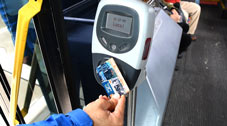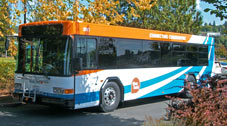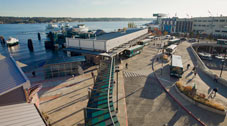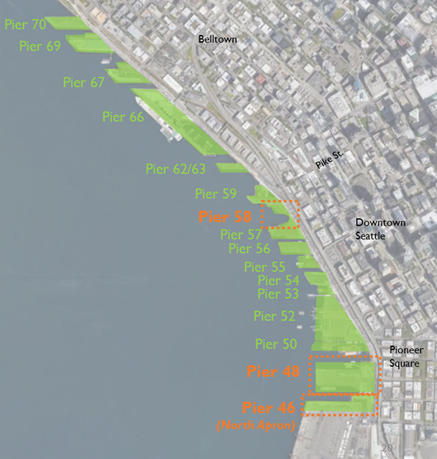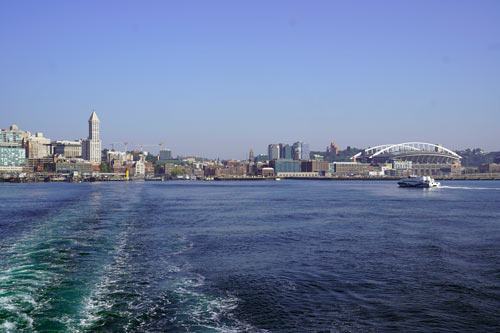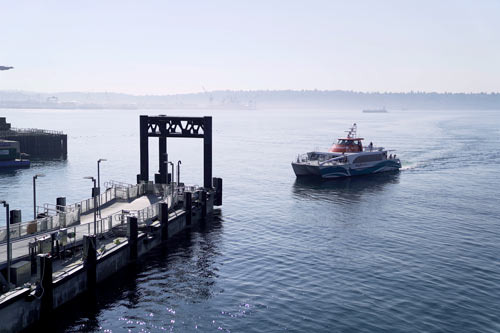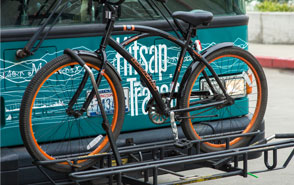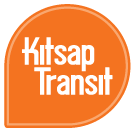LEARN KITSAP TRANSIT
Seattle Fast Ferry Terminal Project
OverviewKitsap Transit’s Seattle Fast Ferry Terminal Project seeks to expand passenger-only ferry (POF) terminal capacity in downtown Seattle. Fast ferry ridership has grown since Kitsap Transit launched its cross-sound service in 2017. Kitsap Fast Ferries operates three POF routes connecting Bremerton, Kingston, and Southworth in Kitsap County to Pier 50 in downtown Seattle. Pier 50 is operated by King County Marine Division, which operates its own POF service (King County Water Taxi). The dock at Pier 50 can only accommodate two ferries at a time. Additional landing facilities designed to accommodate fast ferries are needed to ensure reliable, on-time service that meets rider travel needs now and into the future. What's Happening Now?Preliminary Site Screening and Evaluation Kitsap Transit recently completed a Preliminary Site Screening and Evaluation to identify a preferred downtown terminal location to support long-term POF operations. The study evaluated potential locations along the downtown Seattle waterfront based on criteria such as consistency with site zoning, compatibility with existing and planned uses, multimodal access, water depths, and available space for vessel programming. Engagement with jurisdictions, Tribal governments, communities, and interested parties was conducted throughout the study process. In conjunction with the Federal Transit Administration (FTA), KT conducted early scoping, an optional step in the NEPA process intended to invite input early in project planning. Three Potential Terminal Sites Identified Preliminary site screening identified three sites that could support a long-term Fast Ferry terminal: Pier 48, Pier 46 North Apron, and Pier 58.
|
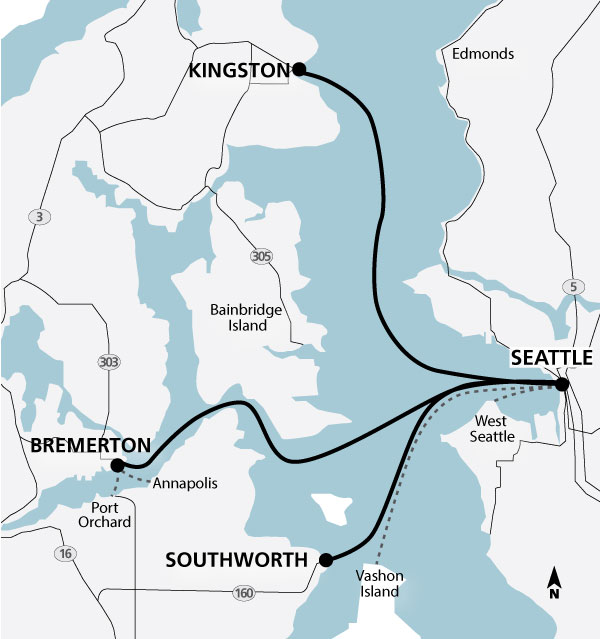
Kitsap Transit Fast Ferry Routes Project DocumentsEarly Scoping Information Report Presentation, Early Scoping Public Meetings Preliminary Site Screening and Evaluation Summary Project Contact Subscribe to the Seattle Fast Ferry Terminal Project e-mail list. |
What's Next?
With site alternatives identified, Kitsap Transit will begin a comprehensive environmental review process of all three sites. The process will start with a formal scoping period to allow agencies, Tribes, the public, and all other interested parties an opportunity to comment on the scope of analysis in the environmental impact statement. After formal scoping is complete, Kitsap Transit will prepare and publish a draft environmental impact statement.
Upon completion of the environmental review process, Kitsap Transit plans to advance the design for the selected alternative, secure permits and necessary property rights, and construct the facility.
Project Timeline
The Seattle Fast Ferry Terminal Project is in the third and final phase of its alternatives development process (shown below), which will include an environmental review of potential sites. Outreach completed to date to support site screening included public meetings, tribal and inter-agency meetings, a public survey, and direct initial outreach to waterfront property owners and local agencies.
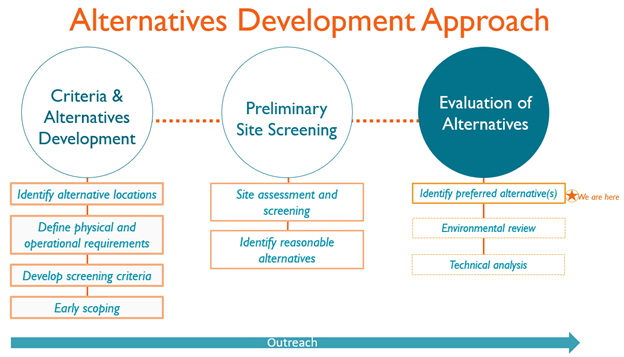
Get e-mail updates on the project by subscribing to the Seattle Fast Ferry Terminal Project e-mail list.
FAQs
Why does Kitsap Transit need a new downtown Seattle passenger-only ferry terminal?
Ridership on POF routes, including Kitsap Transit’s Fast Ferry service, is growing, as is interest in additional routes across the region. Pier 50, which is also the landing site for King County's two Water Taxis, can accommodate only two POFs at any one time.
The Seattle Fast Ferry Terminal Project will improve the reliability of this regional transit service by addressing the current shortage of POF landing site capacity on the Seattle waterfront. More discussion on the need for the project can be found in the Early Scoping Report and the Preliminary Site Screening and Evaluation Report.
Where might a potential downtown Seattle terminal site be located?
The Seattle Terminal Siting Study evaluated potential locations along the downtown Seattle Waterfront starting north at Pier 70 down to Pier 46 to the south. Of those locations, Pier 48, Pier 46 North Apron, and Pier 58 have been identified as potential terminal sites.
How are potential terminal locations being analyzed?
The alternatives development and site screening process included the following steps:
- Identify potential locations. The range of alternative sites considered in this study included properties along the downtown Seattle waterfront between Pier 46 and Pier 70.
- Define the physical and operational needs for the facility. The operational requirements and infrastructure needed to support KT’s current Fast Ferry service was used to define the minimum spatial requirements of an expanded KT Fast Ferry terminal, including the infrastructure and space needed for vessels, passengers and crew.
- Establish screening criteria. Criteria were established to evaluate sites based on minimum physical and operational needs of a long-term POF terminal facility. Preliminary screening criteria reflect feedback from early scoping and discussions with stakeholders.
- Conduct preliminary site screening. The range of alternative sites were screened based on the screening criteria established: site use compatibility, terminal access and modal connections, and space for vessel programming and navigation.
Further assessment of alternatives will be based on Kitsap Transit’s long-term service needs and goals, environmental, cultural, and historical impacts, and community input.
What is the environmental review process?
The environmental review process aims to provide full and open consideration of potential environmental impacts from Project alternatives, including a comparison between alternatives and a no-build condition. The process will also inform decision-makers and the public on any measures to avoid or minimize adverse impacts or enhance the quality of the environment.
The environmental review process will include a formal scoping comment period. This will allow agencies, Tribes, the public, and all other interested parties an opportunity to comment on the scope of analysis in the environmental impact statement and the range of alternatives.
What happened prior to site screening and evaluation?
Kitsap Transit and the Federal Transit Administration (FTA) recently completed early scoping for the Seattle Fast Ferry Terminal Project. Scoping is a process that helps define and refine the project purpose and need, alternatives, and criteria used for evaluation of alternatives. Early scoping is an optional step that precedes formal scoping and is a first opportunity for the public to learn about a proposed project.
Early scoping for the terminal siting occurred within the context of the Council on Environmental Quality’s regulations for complying with the National Environmental Policy Act (NEPA). The FTA was the lead agency under NEPA and Kitsap Transit was the lead agency under the Washington State Environmental Policy Act.
Early scoping included a public comment period, during which Tribal governments, agencies, transit riders, property owners, businesses, community-based organizations and all other interested parties were invited to comment on the project's purpose and need and potential impacts and benefits to the community and environment that should be considered when developing and evaluating alternative site locations.
Public Meetings
Kitsap Transit and the Federal Transit Administration held two public meetings as well as a Tribal and inter-agency meeting.
Recordings of each meeting are available below, and the Presentation is available under Project Documents (right sidebar):
|
|
|

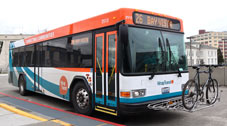 Routed Buses
Routed Buses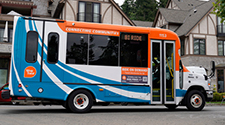 On-Demand/Dial-A-Ride
On-Demand/Dial-A-Ride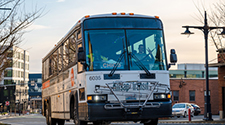 Worker/Driver
Worker/Driver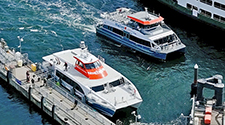 Ferries
Ferries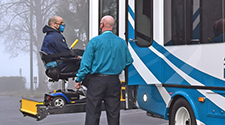 ACCESS & VanLink
ACCESS & VanLink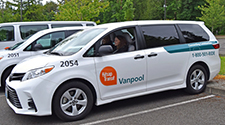 Vanpool, Carpool, SCOOT
Vanpool, Carpool, SCOOT